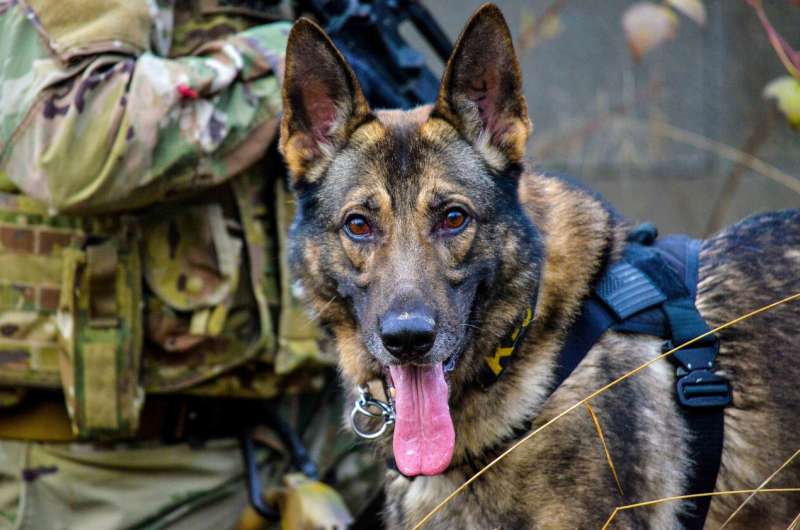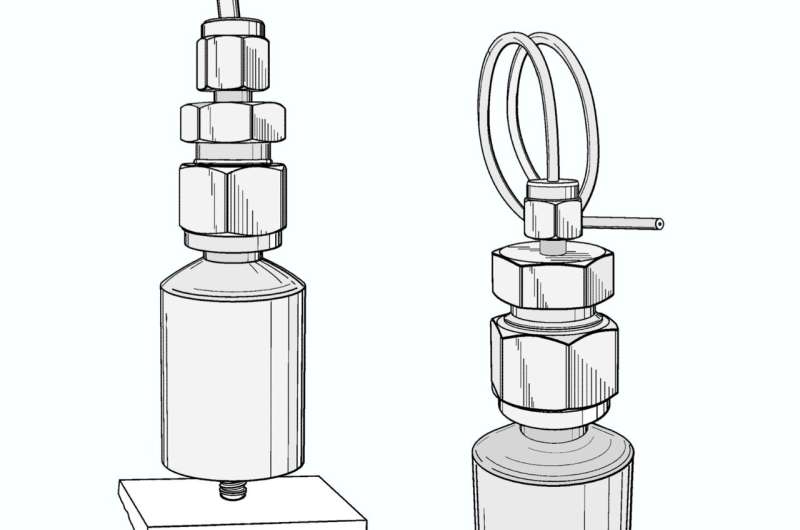Nandi X-284, from the 100th Military Police Detachment, takes part in a scenario-based tactical search lane exercise at the Panzer Kaserne range, Boeblingen, Germany on Nov. 26, 2019. Credit: Rey Ramon/Army
A U.S. Army researcher has scored a patent for inventing a new tool for training dogs to detect chemical compounds.
Tom Hughes, a chemist with the Army's Chemical Biological Center, is the mind behind U.S. Patent 10,485,219, a new, efficient canine scent detection training aid. Hughes' method streamlines the training process for detection dogs while preventing contamination that can throw off dogs' sense of smell by using a training aid that delivers "customizable emissions rates" and "consistent odor profiles."
Currently, canines are trained by exposing them to substances measured by mass, with the amount reduced or increased to vary the animal's "dynamic range," or ability to detect the material. However, according to Hughes, this method is imperfect as it fails to account for the diffusion differences of varying substances, as well as the potential contamination the substance will have coming into contact with other odors.
The end result is that "canine trainers and handlers are often unaware as to the quantity of odor they are presenting to their dog." To remedy this, Hughes' invention consists of a series of precise stainless steel capillary tubes of varying lengths and diameters.
Illustration of the Army-invented training aid for enhanced smell detection and testing. Credit: U.S. Army
The tubes diffuse a specific amount of odor into the air, beginning with larger amounts to get the animal used to the smell, and slowly—using smaller tube diffusers—introducing less and less in order to sharpen the dog's sensitivity. "The progress of a canine's training can be monitored by recording the improvement in the sensitivity of the canine over time," the Army patent states. "Being able to track the progress of a canine's improvement in sensitivity (or lack of improvement) will provide trainers with tools to evaluate canines, handlers, and processes to improve the overall success of the training regime. For example, once a canine can reliably detect a 10 ng/min tube, the trainer may elect to begin using a 1 ng/min tube to improve the canine's sensitivity to the target chemical."
Accurately training canines to detect everything from illicit drugs to bomb-making materials provides a wide range of commercial and government opportunities. The Transportation Security Administration alone deploys more than 900 canine teams.
"There's something beautiful about an invention that simplifies and streamlines a complex task such as training detection dogs," Marti Elder, senior technology manager at TechLink, said. "This patent represents a way forward for improved safety and threat detection and prevention in both the military and law enforcement sectors and we are excited to help any interested business license the rights."
Provided by TechLink

























